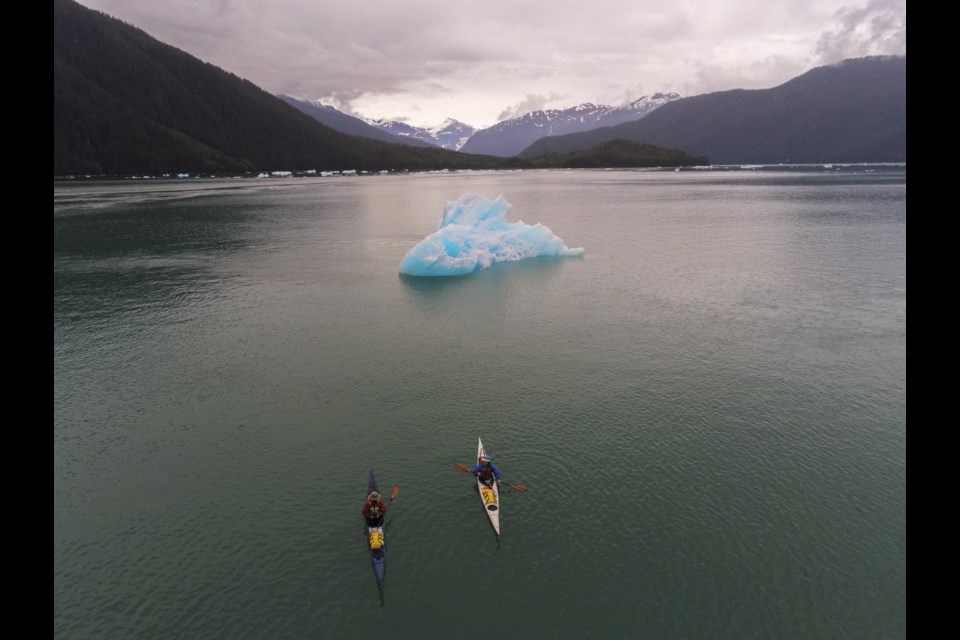Chris Whittaker has embarked on his fair share of outdoor adventures since leaving his native U.K.
The 29-year-old has guided paddle tours along Italy’s Sicilian coast and through B.C.’s Discovery Islands and is partway through his third winter as a snowboard instructor in Whistler. More recently, he launched his own company bringing small groups off the beaten path in far-flung destinations around the globe.
But most of those adventures came alongside an employment contract.
“I got into the outdoors as a way to travel and work, and it was a great job, but I’ve never really done any outdoor stuff just for myself,” Whittaker explained.
So sparked the idea to set out on his most ambitious, skill-testing adventure yet: kayaking up the Inside Passage. (Well, that, and a chance meeting in a pub back in 2018 with two kayakers who were completing the route themselves, said Whittaker.) It’s a shipping route that weaves through rugged archipelagos from the northwest corner of Washington State to the portion of Alaska’s coast that meets the Yukon and B.C. borders.
After initially considering going it alone, Whittaker tapped his coworker from a Quadra Island-based kayak guiding outfit, Nuka de Jocas, to join. No stranger to long-haul paddle trips, de Jocas previously kayaked the more than 7,300 kilometres between Montreal and Mexico’s Yucatan Peninsula over a 15-month period. (Whittaker’s longest kayak trip, comparatively, had been six days.)
At approximately 1,600 km, the Inside Passage was considerably shorter, but its remoteness posed an entirely different set of challenges. “It would be days, or sometimes over a week without really seeing anybody,” Whittaker said.
In keeping with their ultimate objectives to “Have fun, eat well and not die,” the pair dubbed their self-supported northbound journey the “For Fun’s Sake” or FFS Expedition. They planned to set off in 2020, but a small blip called the COVID-19 pandemic put a two-year hold on the endeavour. The pair eventually launched their boats in Lund, on B.C.’s Sunshine Coast, last May. They paddled approximately 25 to 30 km daily before rolling into Skagway 72 days later, on the last day of July.
“The whole point of the trip was to have fun,” said Whittaker. “We weren’t trying to beat any record times … We’d have a few drinks in the evening; if we wanted to stay a bit longer somewhere and watch the wildlife, we did that. We just wanted to make it everything it could be and really experience the whole thing. It felt really great to achieve that.”
They decided to film a web series, not just to hopefully entice sponsors, but to share the trip with friends, family and fellow adventurers. But “First and foremost, it was a way to document it for ourselves and our future selves to look back on,” Whittaker explained.
B.C.’s temperate rainforest offered a plethora of once-in-a-lifetime experiences to document, like a front-row seat to a pod of humpback whales bubble-feeding just metres from their shoreside campsite one morning. Whittaker’s concern about potential grizzly encounters, meanwhile, was quelled by a different kind of encounter, this one with a Kitasoo/Xai’xais Chief, a coastal First Nation near the Great Bear Rainforest, who also worked as a bear-viewing guide.
“He was in a canoe, we’re in our kayaks,” said Whittaker. “He took us down to this creek and, sure enough, showed us some grizzlies. It gave us an opportunity to ask him loads of questions and … he assured us that the [bears there] have plenty of food—they don’t harm humans unless you do something seriously bad to aggravate them, so that put the whole grizzly bear thing at ease.”
The meeting led to another highlight of the expedition, when the Chief invited the kayakers to stay in the community’s traditional bighouse. “Just to be somewhere dry was a win, but to be in such a special building was really mind-blowing,” Whittaker recalled. “It’s the first bighouse I’ve ever even seen and to be able to go inside and sleep in it was wild.”
Aside from increasingly cold, damp conditions as they moved north—sometimes compounded by camp-stove malfunctions—treating the expedition as a content gathering mission provided its own set of logistical trials. For example, a lack of electrical outlets to charge their two GoPros, two DSLR cameras and drone.
“We just had to be really conservative with what and when to film … because the whole trip is so beautiful, so incredible, you just want to film every single mountain and every single bit of everything,” said Whittaker. “We discussed each day what we’d need to film to further the story and help the audience see what’s happening, so that allowed us to just turn the cameras on for something we knew needed to be captured.”
Now, Whittaker and de Jocas are releasing a new instalment of the 10-part FFS Expedition series on their YouTube channel each Wednesday, with the first two episodes already uploaded and available for viewing here. Check out the first episode below:



